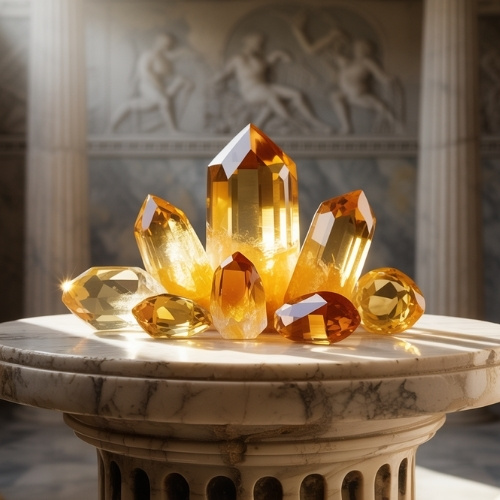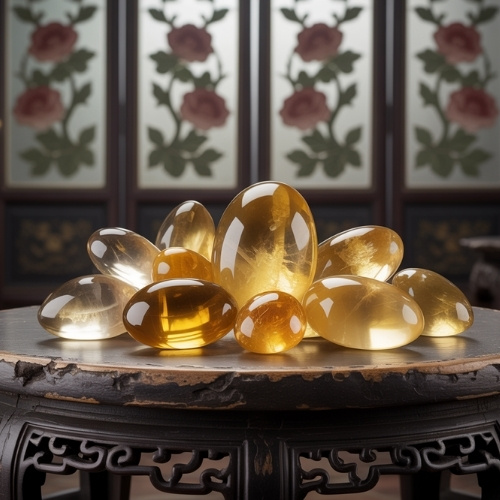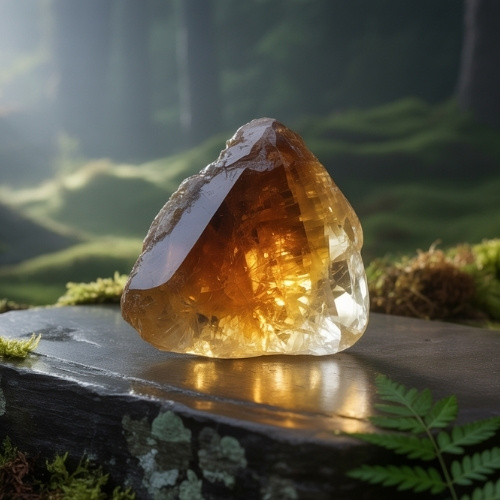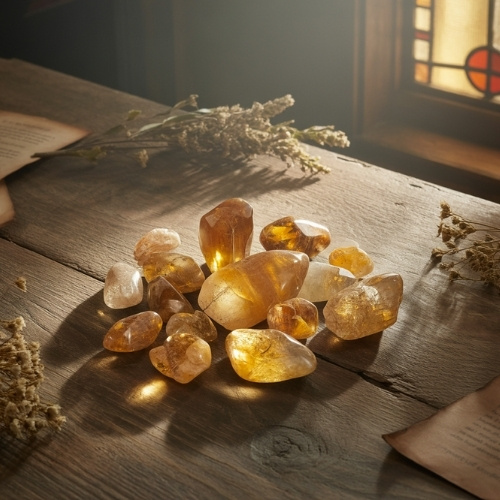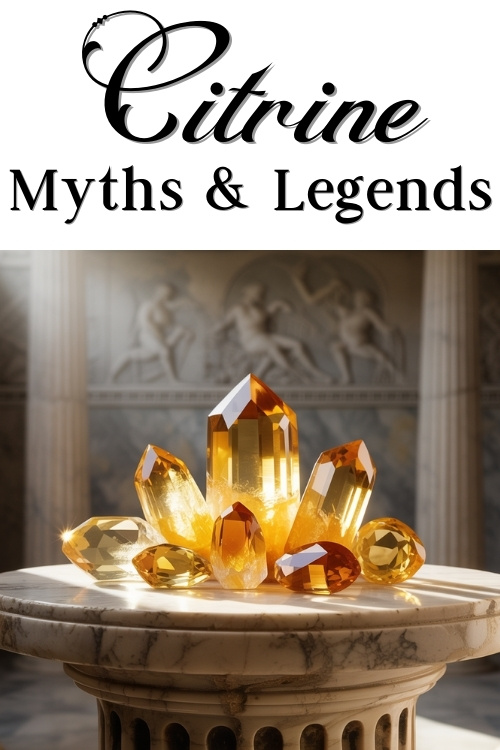Estimated reading time: 4 minutes
Citrine has brightened lives for centuries, from ancient merchants tucking it into their coin pouches to medieval healers keeping negativity at bay. Its warm, honeyed glow feels like sunlight in your hand, making it a gem long loved for joy, abundance, and inner strength.
Let’s explore the golden threads of folklore woven around this luminous stone.
🔗These ancient stories often influence how we view citrine today, from spiritual qualities to symbolic associations. Discover the full range of Citrine’s meanings here
Jump to:
Ancient Greece and Rome: A Gift from the Sun Gods
Back in ancient times, people admired citrine because it looked so much like amber and topaz. The Greeks and Romans loved its golden glow, seeing it as a little bit of the sun’s energy captured in stone.
Some legends suggest that citrine was linked to Apollo, the Greek god of the sun, music, and prophecy. Carrying a golden-yellow gem was thought to invite his favour, bringing artistic brilliance, eloquence, and healing.
Roman priests would sometimes wear yellow quartz in rituals, believing it could bring them divine insight and protection.
Merchants loved citrine too, calling it the “merchant’s stone.” They’d slip it into coin pouches or place it by shop ledgers, hoping it would bring a little extra luck and prosperity.
Chinese Lore: The Stone of Generosity
In Chinese tradition, citrine is all about wealth. And not just the financial kind, but generosity and having a rich, open heart as well.
In Feng Shui, people often tuck citrine into the “wealth corner” of their home or office to invite prosperity and good vibes. Its sunny colour is said to draw in success and chase away negative energy.
Scottish Highlands: Cairngorm Power and Clan Heritage
Citrine holds a special place in Scottish folklore, particularly in the Highlands.
A type of quartz called “Cairngorm” was used on swords and worn by clan chiefs, as it was believed to ward off fear in battle. They were also set into traditional Scottish jewelry such as kilt ornaments and brooches during the Victorian period.
Cairngorm is usually thought of as smoky quartz, but some stones have a warm amber tone. Those are actually citrine, which is why I’ve included them here.
Medieval Europe: A Mind-Clearing, Dream-Lifting Gem
In medieval Europe, healers kept citrine close at hand, believing it could calm anger, clear the mind, and chase away nightmares.
Dream interpreters would keep the stone under their pillows to encourage truthful visions and deep sleep.
Alchemists, enchanted by citrine’s golden glow, called it “the sun in crystal.” They believed it could awaken the third eye and solar plexus, the areas of power, intuition, and identity.
A Stone of Sunshine and Strength
Citrine’s stories span wealth, wisdom, warmth, and willpower. Whether you see it as a talisman of abundance, a crystal of clarity, or simply a sunny spark of joy, citrine carries centuries of light. These legends remind us that not all power is fierce. Sometimes it’s steady, radiant, and quietly life-giving.
Quick side note – these citrine myths and legends make great marketing content, so feel free to retell them to your audience!
🔗 Want some guidance on using gemstone knowledge to market your jewellery business? Read Using Gemstone Knowledge to Boost Your Jewellery Sales
🔗 Working with citrine in your jewellery making? Take a look at my Jeweller’s Guide to Citrine
🛍️ Curious to find a pre-owned citrine for your next design? Check out what’s available.
📌 Save these citrine myths and legends so you can easily find them again.

